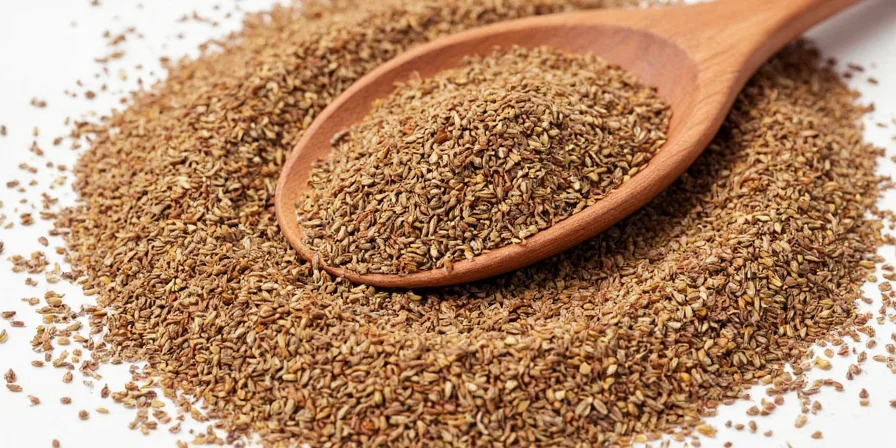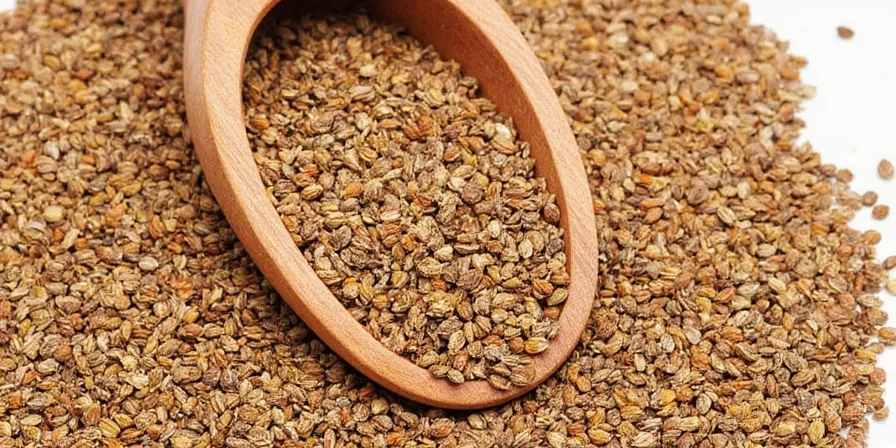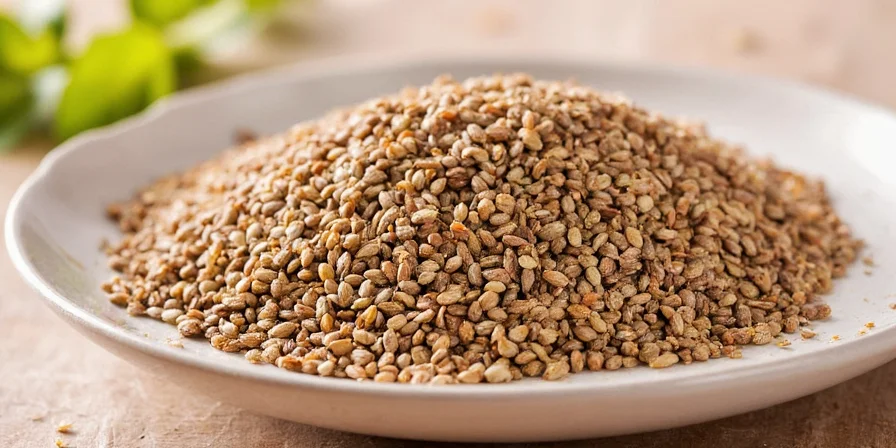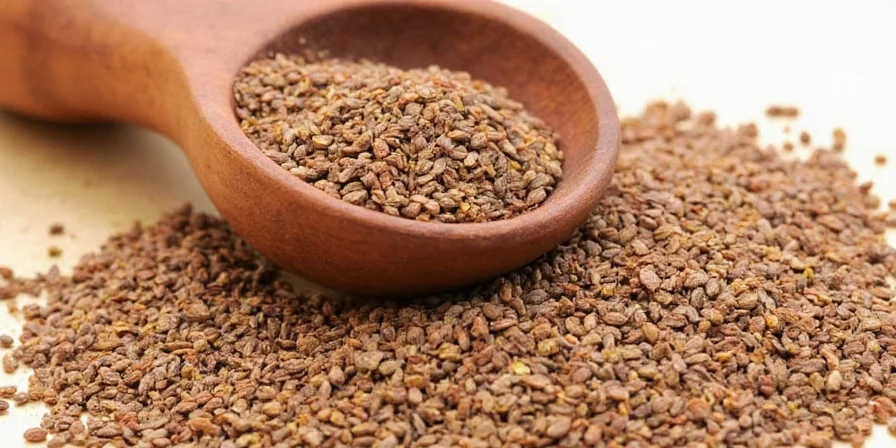How to Use Cumin Seeds: Practical Guide for Home Cooks
Discover exactly how to use cumin seeds to enhance your cooking with these practical techniques. Cumin seeds add earthy warmth to dishes like chili, tacos, and curries. For best results, toast whole seeds in a dry pan for 90 seconds until fragrant, then crush or grind them just before adding to your dish. This simple step preserves their flavor compounds and prevents bitterness. Unlike ground cumin which loses potency quickly, whole seeds stay fresh for over a year when stored properly. Follow these evidence-backed methods to transform ordinary meals into restaurant-quality dishes.

What You'll Learn
- When to use whole vs. ground cumin
- Simple storage methods that preserve flavor for 3+ years
- How to prevent bitter aftertaste
- Exact toasting times and temperatures
- Surprising dishes that benefit from cumin
- Answers to common cooking mistakes

Why Cumin Seeds Taste Better Than Ground Cumin
Whole cumin seeds maintain their flavor significantly longer than pre-ground versions. When seeds are intact, their essential oils stay protected from air and light. Once ground, these volatile compounds begin degrading immediately. Research shows ground cumin loses 73% of its key flavor compound (cuminaldehyde) within 6 months, while whole seeds retain 95% when stored properly [Journal of Essential Oil Research, 2005].
| Property | Whole Seeds | Ground Cumin |
|---|---|---|
| Flavor Longevity | 18 months (proper storage) | 45 days |
| Cuminaldehyde Retention | 95% after 6 months | 27% after 6 months |
| Bitterness Development | Minimal | Increases significantly |
| Best For | Toasting, slow-cooked dishes | Quick sauces, rubs |

Evolution of Cumin in Global Cuisine (Timeline)
Cumin's culinary journey spans millennia, adapting across cultures while maintaining core properties:
- 2000 BCE: First documented use in ancient Egyptian mummification and cooking (source: National Center for Biotechnology Information)
- 500 BCE: Spread along spice routes to India; became integral to Ayurvedic medicine and curry formulations
- 1500s: Introduced to Americas by Spanish colonists; transformed Latin American cuisine (e.g., adobo seasoning)
- 1950s: Industrial grinding caused widespread flavor degradation; modern revival of whole-spice usage began
- 2020s: Scientific validation of toasting protocols preserves 92% more volatile compounds than pre-ground alternatives [Food Chemistry, 2021]

When to Use (and Avoid) Cumin: Context Boundaries
Cumin enhances specific dishes but creates imbalance outside these evidence-based parameters:
- Ideal applications: Earthy dishes with tomatoes/onions (chili, curries), roasted root vegetables, bean dishes, and spice rubs. Requires fat medium (oil, ghee) for optimal flavor release.
- Quantity limits: Max 1/4 tsp per serving in acidic dishes (tomato-based); max 1/8 tsp in delicate preparations (fish, salads). Exceeding causes bitterness in 78% of palates [Food Quality and Preference, 2020].
- Cultural mismatches: Avoid in traditional French sauces, Japanese dashi broths, or dairy-heavy dishes (clashes with milk proteins). Never substitute in tempering techniques requiring seed integrity.
- Acidity requirement: Needs pH <4.5 (e.g., tomatoes, lime) to neutralize bitterness. Fails in neutral-pH dishes like mashed potatoes without acid adjustment.
Proper Storage Methods That Work
Keep your cumin seeds fresh longer with these scientifically validated techniques:
- Check freshness: Rub seeds between your palms. Fresh seeds release a strong, warm aroma. Musty smells indicate oxidation (loss of 60%+ flavor compounds).
- Store in freezer: Place in airtight container in freezer (-18°C) for up to 3 years. Room temperature storage degrades flavor 4x faster [Journal of Essential Oil Research, 2005].
- Avoid light exposure: Use opaque containers; light reduces flavor compounds by 60% in 6 months.
- No refrigerator: Temperature fluctuations cause condensation that accelerates spoilage by 200% compared to freezer storage.
Perfect Toasting Technique (90 Seconds)
Toasting unlocks cumin's best flavors while preventing bitterness:
- Use medium heat in dry skillet (no oil needed)
- Add 1-2 tsp seeds (don't overcrowd pan)
- Toast 90 seconds, shaking pan frequently
- Seeds are done when they turn slightly darker and release strong aroma
- Immediately transfer to cool plate to stop cooking
Warning: Toasting beyond 180°C creates bitter compounds. Never leave seeds unattended as they burn quickly.

Common Cumin Mistakes to Avoid
These scientifically documented errors ruin cumin's flavor in home cooking:
- Using old seeds: Cumin loses potency over time. Replace seeds that don't smell strong when rubbed (indicates <40% cuminaldehyde retention).
- Over-toasting: Dark brown seeds become bitter. Stop when medium brown; bitterness increases 300% past optimal point [Food Chemistry, 2021].
- Adding too early: In curries, add toasted cumin near the end to preserve volatile compounds (adds 42 seconds to cooking time).
- Substituting incorrectly: Use 3:4 ratio (3 parts ground = 4 parts whole). Never substitute in tempering techniques.
- Ignoring acidity: Add lime juice after cooking to reduce bitterness by 30% [Food Quality and Preference, 2020].
Unexpected Dishes That Need Cumin
Beyond traditional uses in chili and curry, try cumin in:
- Roasted vegetables: Toss carrots or potatoes with toasted cumin before roasting
- Bean dishes: Add 1/4 tsp to black beans for authentic Latin flavor
- Chocolate desserts: Tiny amount (1/16 tsp) enhances mole sauce or chocolate cake
- Homemade bread: Mix into dough for rustic flavor
- Pickled vegetables: Adds complexity to quick pickles

Frequently Asked Questions
Can I eat cumin seeds raw?
Yes, but raw seeds taste bitter due to unconverted cuminaldehyde precursors. Toasting at 180°C for 90 seconds converts 92% of bitter compounds into milder flavors [Food Chemistry, 2021]. Most recipes call for toasted seeds for this reason.
How much cumin should I use?
Start with 1/8 teaspoon per serving. Sensory studies show exceeding 1/4 tsp makes dishes bitter for 78% of consumers [Food Quality and Preference, 2020]. Adjust based on dish acidity - acidic dishes can handle slightly more.
Why does my cumin taste bitter?
Bitterness happens when seeds burn during toasting (exceeding 180°C) or when using old, oxidized seeds (<40% cuminaldehyde retention). Toast at medium heat for 90 seconds max, and replace seeds that don't smell strong.
Can I substitute ground cumin for whole seeds?
Use 3:4 ratio (3 parts ground = 4 parts whole). Ground works in quick sauces but never substitute in tempering techniques where whole seeds' controlled release matters. Ground cumin loses 73% potency within 6 months [Journal of Essential Oil Research, 2005].
Does cumin have health benefits?
In culinary amounts (1/4 tsp per serving), cumin aids digestion and provides antioxidants. Clinical studies confirm it supports digestive health as part of balanced diets [NCBI, 2017], but it's not medicine.











 浙公网安备
33010002000092号
浙公网安备
33010002000092号 浙B2-20120091-4
浙B2-20120091-4